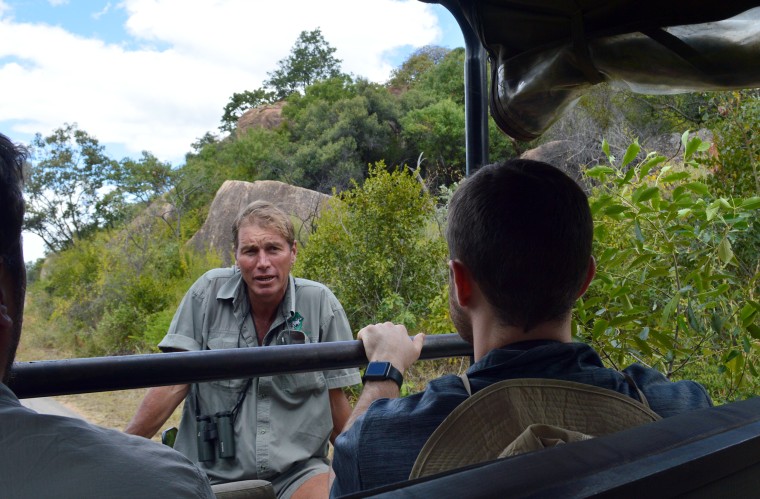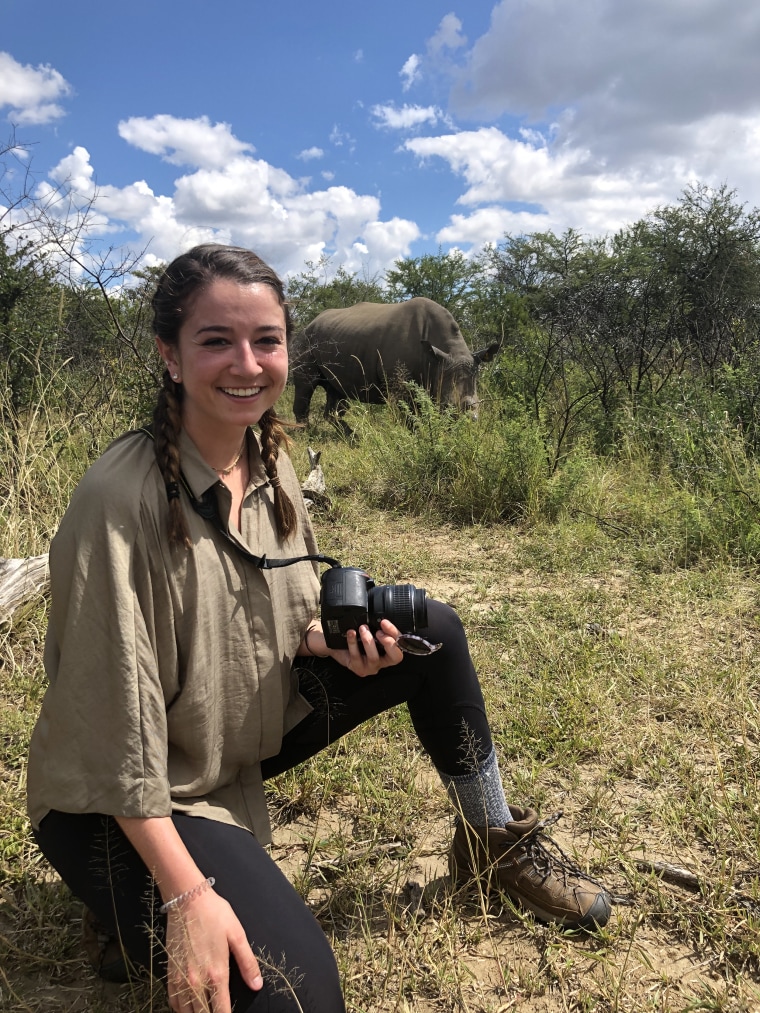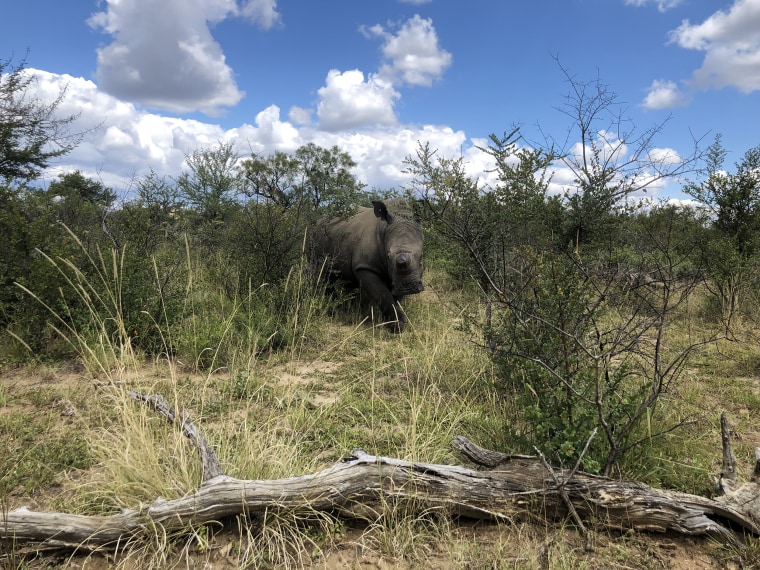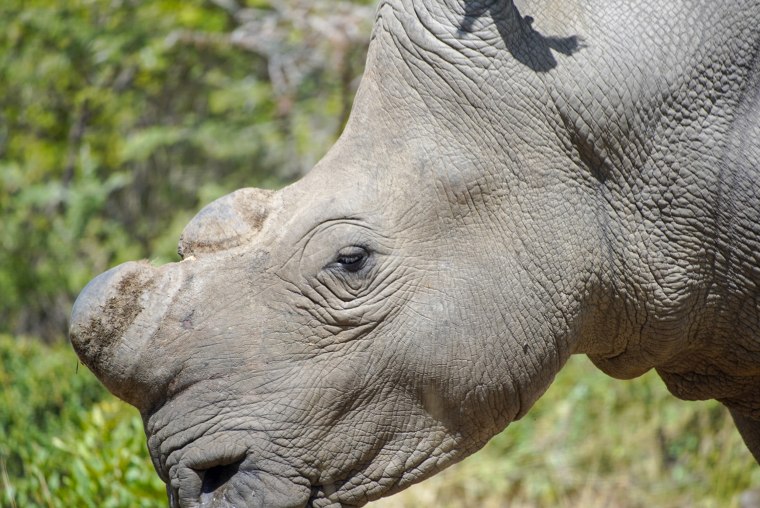Poachers are using Instagram and other selfie-rich social media platforms to plot their next kill of critically endangered species, with rhinos especially at risk due to the value of their horn.
Part of the appeal of a safari trip is that it’s filled with the potential of social media gold in the form of animal-sighting photos. But, just as artificial intelligence is used to build profiles and identify images of humans on social media, it is possible to build profiles of individual identified animals, such as rhinos, and then map their home ranges simply by using data available online.
“Because of the way cellphones track your location now, you don’t need to critique someone’s photograph to find out where they were at a given time,” Tarah Wheeler, a security researcher, said. “Metadata, including exact longitude and latitude, is stuck to the background of the photo.”
This information is embedded into photos if the user has location services turned on, even if a cellphone provider doesn’t necessarily have service in certain remote areas, like a safari park in Africa — where rangers work 24/7 with a license to kill poachers, to keep endangered rhinos protected.
Poaching has escalated in recent years across the African countries where rhinos live; in South Africa alone, the number of rhinos killed in 2017 was estimated to be about 1,200, equivalent to approximately three rhinos per day. The poachers work quickly: shooting the animal in the head, tearing the horn off from the skull, and leaving the rhino to die a painful death.

The cost of endangerment
Rhino horn is estimated to sell for about $27,000 per pound on the black market, which means the average rhino horn can be worth as much as $1 million.

“It’s a status symbol,” Ian Harmer of African Wanderer Safaris said. “In certain Asian markets, if you own a rhino horn, it immediately shows off how much money you have. And right now, [Chinese consumers] in particular have more money than they know what to do with.”
According to a recent Boston Consulting Group report, China’s luxury spending is increasing year to year, predicting that the country will contribute 41 percent of global luxury consumption by 2025, while financial advisory firm PriceWaterhouseCoopers forecasts China’s overall economy will eclipse that of the United States by 2030.
China recently reversed a ban on using rhino horn for “medical research or in healing” — so once the horn reaches China, it’s technically legal.
At the end of 2017, it was estimated there were about 17,000 white rhinos and about 5,000 black rhinos living in Africa. This estimation puts the species respectively at “near threatened” and “critically endangered” status, according to the International Union for Conservation's "Red List" of threatened species. Since then, the world’s last male white rhino died from “age-related” complications in March 2018.
A bulk of the rhino horns find their way to Vietnam and China, according to the World Wildlife Fund. These markets cherish the horns as pieces of art, but more commonly the horn is ground up for use in traditional medicines or marketed as an aphrodisiac. A rhino horn is made up of mostly keratin, and scientists have disproven any medicinal qualities, comparing it to a human fingernail. However, in November 2018, China lifted its ban on utilizing rhino horn and tiger bones for “medical research or in healing,” so once the horn reaches China, it’s technically legal.
Searching for a solution
Harmer’s safari business is based in Matobo National Park in Zimbabwe, where this reporter met the guide while on vacation visiting the country. Harmer's family emigrated in 1890 and left records telling of “black rhinos everywhere [they] could see, easily outnumbering the elephants.”
While the rhino is a member of the “Big Five” game animals that tourists seek on safari — lion, leopard, rhinoceros, elephant, and Cape buffalo — guides say that seeing a rhino is rare. Harmer grew up in the park around the rhinos and has been guiding for more than 30 years. Matobo, known locally as Rhodes Matapos, is one place where rangers push for a safe and legal rhino trade to prevent poaching and the rhino’s declining population, by trimming the horn and stockpiling the product to regulate the market, without having to harm the animal.
“All in, we can trim the horn of a rhino in less than 10 minutes,” Harmer described. “The rangers fly in a helicopter and use a sedative from the air, which takes about five minutes to take effect. They’ll take about 35 seconds with a chainsaw to trim the horn and be done — it’s just like trimming a human fingernail; so, the animal doesn’t feel anything, and they’re on the ground for no more than two minutes.”

Harmer believes this effort could be an example of the solution to the rhino depopulation threat. His argument aligns with organizations like Save The Rhino International, which lays out how a legal rhino horn trade could be effective with sustainable-use policies. But there is debate among the rhino conservation community about whether legalization of the trade could escalate demand in Asian markets, or lend credibility to the idea that rhino horn has medicinal value.
Trade negotiations stall progress
Every three years, representatives from 183 countries meet at the Convention on International Trade in Endangered Species of Wild Fauna and Flora (CITES). One item on their agenda for this year’s meeting discusses the legalization of rhino horn trade. The meeting was originally scheduled to take place this year in late May in Sri Lanka, but was moved to August in Geneva, due to the recent terror attack in Colombo.
CITES acknowledged that the idea of trimming rhino horns and developing the trade is “not new, but at the moment not possible, in view of the international regulations governing international trade in rhinoceros.”
“People don’t make plush cuddly rhino toys — and there aren’t animated Disney films made about them."
“Clearly there is no room for complacency over illegal killing and illegal trade of rhinos,” CITES Secretary-General Ivonne Higuero told NBC News. “Since 2007, with the exception of the Sumatran rhino, all species have increased in numbers in the wild.”
Higuero referred to a working CITES report prepared for their 2019 meeting, which pointed out that poaching in the first eight to nine months of 2018 appeared to remain low, “with the exception of Botswana and Namibia, where slight increases that give cause for concern were observed.”
Alternative routes
Scientists are working toward several solutions to prevent rhino extinction. This year, the first rhino born by artificial insemination made history at Zoo Miami. Biotech startup Pembient “biofabricates” rhino horns out of keratin and a 3-D printer, with the goal of undercutting the illegal horn market.
“The ripple effect on the ecosystem and biodiversity if the species disappears will be dangerous," Harmer said. "All sorts of beetles, lizards, small mammals, and flora and fauna are dependent on the rhino’s existence.”
Ultimately, it could simply come down to how much the human population cares, he said.
“Rhinos don’t have the cute factor; people don’t make plush cuddly rhino toys — and there aren’t animated Disney films made about them," he said.
